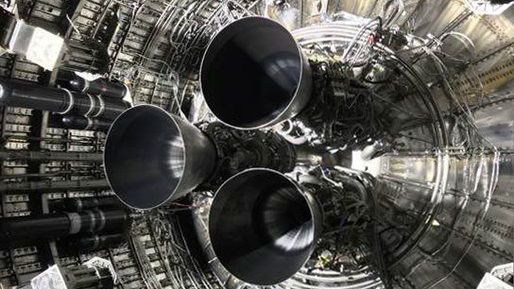
Elon Musk thinks SpaceX needs to ramp up production of its next-generation Raptor engine soon or face potentially dire consequences, according to media reports.
Raptors will power Starship, the huge, fully reusable vehicle that SpaceX is developing to take people and cargo to the moon, Mars and other distant destinations. Each Starship will need a lot of Raptors — 33 for the giant first-stage booster, called Super Heavy, and six for the upper-stage spacecraft, known as Starship.
SpaceX wants to operate a large fleet of Starships in the coming years. Indeed, perhaps 1,000 of the vehicles will be needed to colonize Mars, one of Musk's long-held dreams, the billionaire entrepreneur said earlier this month at the joint fall meeting of the Space Studies Board and the Board on Physics and Astronomy, both of which are part of the U.S. National Academies of Sciences, Engineering, and Medicine.
Related: SpaceX Inspiration4 astronauts return to Earth with historic splashdown off Florida coast
So SpaceX aims to manufacture a lot of Raptors in the relatively near future. And the company is apparently not on track to meet that challenge at the moment, according to an email Musk sent to SpaceX employees over the Thanksgiving weekend.
In the email, which was obtained by Space Explored, Musk describes the Raptor production situation as a "crisis" that is "much worse than it had seemed a few weeks ago." He says that he was foregoing a planned Thanksgiving weekend break to work on the Raptor production line and implores all SpaceX employees to pitch in if they can.
"Unless you have critical family matters or cannot physically return to Hawthorne, we will need all hands on deck to recover from what is, quite frankly, a disaster," reads the email, which Space.com has not seen directly. (SpaceX's headquarters are in Hawthorne, part of the Los Angeles metropolitan area.)
Get the world’s most fascinating discoveries delivered straight to your inbox.
Musk explains that Starship is needed to launch Version 2 of SpaceX's Starlink internet satellites. The company has already lofted more than 1,600 V1 Starlink craft, and roughly 100 of the more-advanced V1.5 line, with its Falcon 9 rocket. But that workhorse launcher (which employs Merlin engines) cannot accommodate the bigger V2 satellites, which Musk sees as vital moneymakers for the company.
"Satellite V1, by itself, is financially weak, while V2 is strong," the email reads, according to Space Explored. "In addition, we are spooling up terminal production to several million units per year, which will consume massive capital, assuming that satellite V2 will be on orbit to handle the bandwidth demand. These terminals will be useless otherwise."
Time is of the essence to get the Raptor problem fixed, Musk stresses in the email.
"What it comes down to is that we face a genuine risk of bankruptcy if we can’t achieve a Starship flight rate of at least once every two weeks next year," the missive reads.
Given that Starship is designed to be completely and rapidly reusable, SpaceX should need just a few operational vehicles to be able to fly twice a month. But right now it doesn't have any, as Starship remains in the test-flight phase.
That could change relatively soon. SpaceX is gearing up to launch the program's first orbital test flight, which will involve a Starship prototype called SN20 and a Super Heavy known as Booster 4. That landmark mission could occur as soon as January or February, provided the U.S. Federal Aviation Administration wraps up its environmental review of Starship's orbital launch site in South Texas by the end of the year, Musk has said.
Space.com reached out to SpaceX for comment about Musk's email and the Raptor production situation but has not yet heard back from the company. You can read more about the email in the Space Explored story, which is full of interesting details.
Mike Wall is the author of "Out There" (Grand Central Publishing, 2018; illustrated by Karl Tate), a book about the search for alien life. Follow him on Twitter @michaeldwall. Follow us on Twitter @Spacedotcom or on Facebook.


